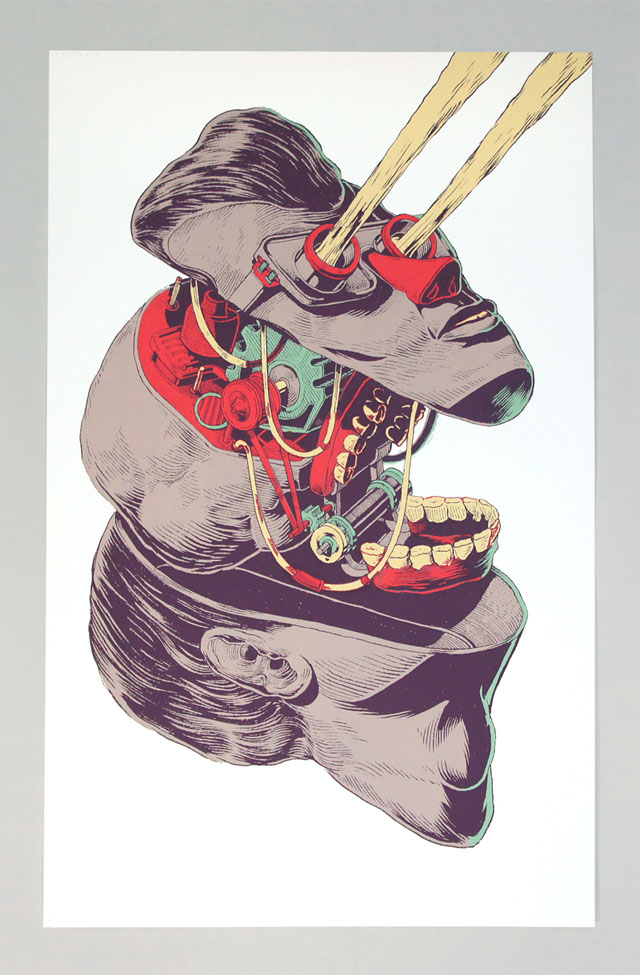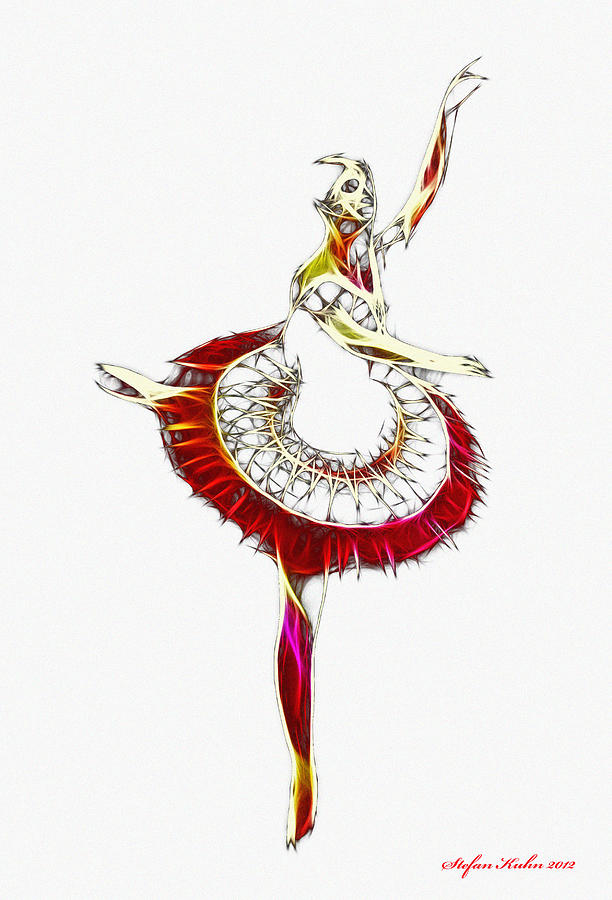There's Natural Selection and
Sexual Selection, and on this world, there is also Existential Selection. Beyond simply sex
and survival, creatures on this world have innate, seemingly irrational
drives. However, like a Rube Goldberg Machine, the ecosystem depends on
these existentialist impulses in order to function. Although any given
organism may be hindered in sex and survival because of their existential
impulse, beyond these constraints, life takes on all sorts of Weird &
Wonderful turns.
How to Use
Roll a handful of creatures, think about how they interact, and write a paragraph for each entry. While developing a creature, look to the others and think how they might fit together. Combine the entries at the end into a single story about the Existential Ecology.
Admittedly the number of features for each entry can be a little overwhelming, but I find that even after creating one or two creatures, it becomes easier to just fill out the rest of the ecology with original creations- no need for the generator.
Most of the features of the generator are of a physical nature with some supernatural elements, but the Existential Niche, specifically the Synchronicity, are the "Rube Goldberg" mechanisms of these Existential Ecologies.
Inspirations
- Richard Prum's Evolution of Beauty (linked above): Inspired me to consider other mechanisms of evolution besides Natural Selection.
- Designing a Genetic Algorithm because learning the rules allows one to break them with greater intentionality.
- Scavengers Reign, which takes the increasingly over-used Moebius "aesthetic" and actually does something unique and interesting with it; a superficially realistic world with an impossible and awesome ecology that defies the typical fitness mechanisms of evolution.
Logistical Notes
This was made in coordination with Gemini. It was
super helpful for structuring the tables and filling the more mundane
entries, and also with the html and javascript code.
There was a lot of back and forth, zhuzhing it up, not just taking some random stuff it generated as-is.
Notably, I even tried to get Gemini to build an ecology with the generator, and it crashed repeatedly- the existentialist concept is apparently too complex for the model, which I found encouraging :p.
More than that, using the Existential Niche Synchronicity to facilitate the Existential ecological interdependence requires human creativity.
Example Existential Ecology
Creature 1: Dragon Turtle
Physical Description
- Body Shape: Amorphous
- Size: Gargantuan
- Limbs: Zero
- Movement Type: Element Bending
- Speed: Very Slow
- Special Adaptations: Venomous
Diet
- Type: Scavenger
- Feeding Adaptations: Digestive enzymes in gut
Social Structure
- Size: Small groups
- Organization: Nomadic
Ecological Role
- Primary Role: Keystone species
- Interaction: Acts as a food source
Reproduction
- Method: Sexual (internal fertilization)
- Existential Influence: Symbolic Gestation: Reproduction is induced after a symbolic representation of the offspring is created or destroyed.
- Frequency: Constant
- Offspring Quantity: Numerous, small
- Offspring Development: Metamorphic
- Parental Investment: Moderate
Existential Niche
- Behavior: Modifies physical appearance through elaborate self-decoration or body modification.
- Synchronicity: Presence or behavior anchors the ecosystem towards some teleological trajectory, and so long as the species survives, the ecosystem will inevitably 'regress to the mean'.
Creature 2: Byakhee
Physical Description
- Body Shape: Conical
- Size: Medium
- Limbs: Four
- Movement Type: Telekinesis
- Speed: Fast
- Special Adaptations: Echolocation
Diet
- Type: Filter feeder
- Feeding Adaptations: Filtering structures
Social Structure
- Size: Small groups
- Organization: Hierarchical
Ecological Role
- Primary Role: Producer
- Interaction: Contributes to nutrient cycle
Reproduction
- Method: Sexual (internal fertilization)
- Existential Influence: Synchronized Cycles: Reproduction is tied to a rare synchronization of natural cycles.
- Frequency: Constant
- Offspring Quantity: Variable
- Offspring Development: Independent
- Parental Investment: Minimal
Existential Niche
- Behavior: Engages in ritualistic displays or dances, often synchronized with natural events.
- Synchronicity: Serves as or facilitates the introduction of an immigrant species into the ecosystem.
Creature 3: Star Monkey
Physical Description
- Body Shape: Radial
- Size: Tiny
- Limbs: Two
- Movement Type: Brachiation
- Speed: Slow
- Special Adaptations: Camouflage
Diet
- Type: Herbivore
- Feeding Adaptations: Claws
Social Structure
- Size: Large herds/flocks
- Organization: Migratory
Ecological Role
- Primary Role: Symbiont
- Interaction: Distributes minerals
Reproduction
- Method: Asexual (fission)
- Existential Influence: Existential Trigger: A specific, seemingly unrelated event triggers reproduction.
- Frequency: Opportunistic
- Offspring Quantity: Numerous, small
- Offspring Development: Metamorphic
- Parental Investment: Minimal
Existential Niche
- Behavior: Meticulously collects and arranges specific objects (pebbles, shells, bones).
- Synchronicity: Low-probability events become slightly more likely, causing divergent natural selection like an anti-carcinisation effect.
The Dragon Turtle, contrary to its name, is actually a complex slime mold that katamaris itself into a mobile "island", and small bands of Dragon Turtles form something like an island chain. Although it hosts many species, it protects itself through venom and digestive enzymes that seep out of cracks or fall from foliage when threatened. They reproduce sexually, creating mild tremors when they meet and exchange genetic information. While one Dragon Turtle gestates, the other breaks off a piece of itself as the shell for the offspring.
Named after the Lovecraftian monsters, wolf-bat Byakhee use a sonic force to glide within the Dragon Turtles, safe from their venom and enzymes. They filter impurities from the slime and their waste attracts species from outside the Dragon Turtle island chain, such as Star Monkeys. Their reproductive cycle is tied to that of the Dragon Turtles, bathing the Dragon Turtles in a sing-song sound bath like a cooing theremin.
Star Monkeys are tiny creatures that look like starfish on two legs and with an uncanny pareidolic simian-humanoid face. Normally camoflauged, they become visible when they swing with their feet claws around the flora of a Dragon Turtle in a wave of stars and faces. They collect star shaped objects for fun, inadvertently pollinating and otherwise distributing resources around the Dragon Turtle. The hoarding behavior of the Star Monkey inadvertently normalizes resources in such a way that Dragon Turtle island chains rarely exhibit the kind of gigantism or dwarfism of species often found on island ecosystems.
















